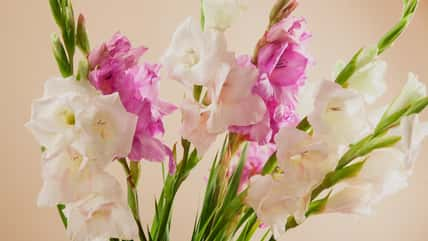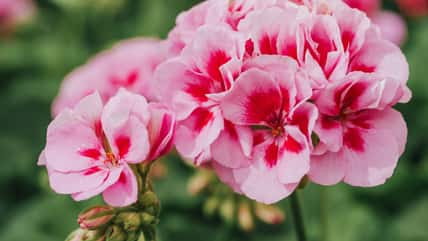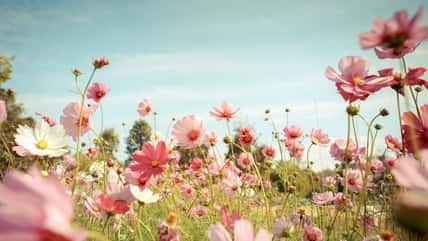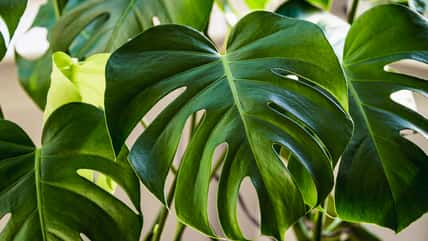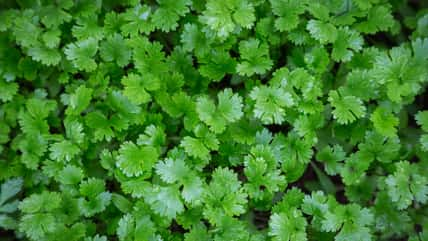Your Guide To Caring For A Zebra Plant, Which Is Beloved For Its Unique, Striped Foliage

Calathea zebrina are beloved for their unique striped foliage, hence why it’s commonly known as the zebra plant.
Hailing from Central and South America, this tropical beauty is a popular indoor houseplant growing up to three feet tall. Plus, its leaves can reach a whopping two feet long!
The zebra plant comes in various cultivars, such as the “Louisae” variety, which has larger leaves and bolder strip pattern, or the “Danica” variety, featuring leaves on the smaller side and a more compact growth form.
Regardless of which variety you choose, here’s how to help the zebra plant thrive in your living space.
How To Care For The Zebra Plant
Given its tropical background, maintaining the right temperature and humidity is essential for zebra plant health.
These plants flourish in humidity levels above 50%, with 60% or higher being ideal. This can easily be achieved in outdoor tropical climates or USDA zones 10 to 11. Otherwise, for indoor zebra plants, you might need to boost humidity levels with a few different methods.
You can use a humidifier to increase moisture, place your plant on a tray filled with water and pebbles, or mist the leaves multiple times each week.
As for temperature, zebra plants like to be warm. They do best in environments between 65°F and 75°F and should never be exposed to any temperatures lower than 50°F.

Sign up for Chip Chick’s newsletter and get stories like this delivered to your inbox.
When it comes to soil, these plants need moist, loamy, and well-draining soil. It’s important to find the right balance between moisture retention and draining, as overly wet soil can cause root rot; meanwhile, soil that drains too quickly won’t retain enough moisture. So, for optimal growth, you should use a mix of potting soil, peat, and perlite.
Busy plant parents may also appreciate the fact that fertilizing zebra plants generally is not necessary. This is because too much fertilizer can actually burn the plant.
However, if your zebra plant appears weak or is growing slowly, you can fertilize during the growing season using a diluted, well-balanced formula at a quarter of its usual strength.
Next, picking the right spot for zebra plants is important. In its natural habitat, it grows beneath large trees and other tropical plants, where it receives filtered, dappled light. As a result, it’s critical that you don’t place the zebra plant in direct light, which can scorch the leaves.
If you opt to grow your zebra plant outdoors, position it in partial sunlight that’s preferably filtered or dappled by surrounding plants. Or, when indoors, place your zebra plant near a bright window while avoiding direct sunlight, like on a shelf.
Finally, watering will take up the bulk of the zebra plant’s care requirements. Regular watering is needed, but the frequency will depend on how quickly the soil dries out. This can vary with the season, climate, and levels of humidity.
Zebra plants should typically be watered once each week during the growing season and less frequently in winter.

It’s easy to check when it’s time to water, too. Simply feel the soil, and once the top one to two inches are dry, give your plant a drink.
With proper care, these plants are resilient and easy to care for. Still, some mistakes can lead to certain issues.
For instance, if you notice brown and curling leaf tips, it’s often a sign of low humidity or insufficient water. You can set up a humidifier near your plant, mist the leaves on a regular basis, or place the pot on a tray with water and pebbles to address humidity problems.
On the flip side, if your plant is too dry, water it deeply until the soil is evenly moist, ensuring any excess water drains away.
Another common issue is excessive drooping or soft, mushy stems. This indicates over-watering and can lead to root rot.
In this situation, it’s important to take immediate action to prevent the root rot from spreading. You should avoid watering directly onto the leaves as well, as water can travel down the stems and result in crown rot.
More About:Gardening
